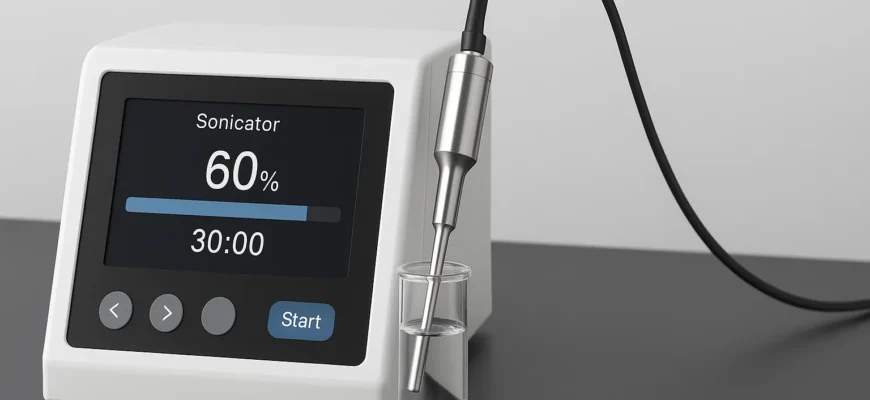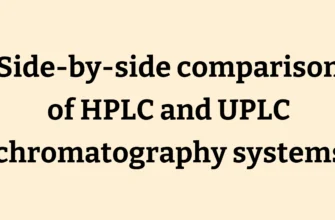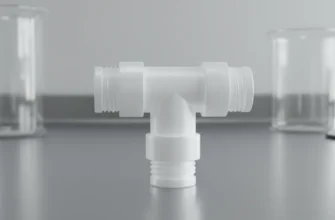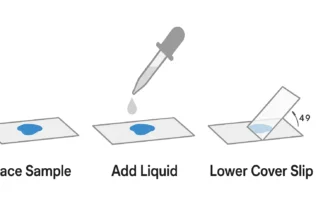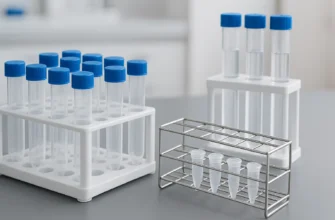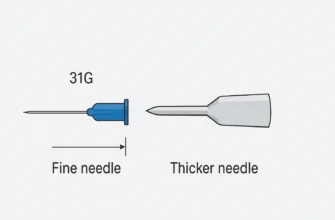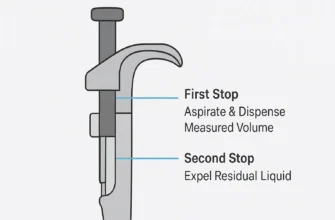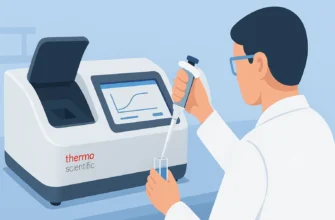How to Choose the Right Ultrasonic Probe Sonicator for Your Lab Needs
In any modern laboratory, precision is paramount. The difference between a breakthrough and a failed experiment can often hinge on the tools used for sample preparation. Among the most powerful and versatile of these tools is the ultrasonic probe sonicator. Selecting the right model isn’t just a procurement task; it’s a critical decision that directly impacts the efficiency, reproducibility, and ultimate success of your research. As the global sonicator market is projected to reach USD 1.2 billion by 2033, with a compound annual growth rate (CAGR) of 7.5%, and the dedicated probe sonicator market expected to achieve USD 250 million in 2025, the expanding role of these instruments underscores the importance of making an informed choice.
This guide provides a comprehensive framework to help you choose the ideal ultrasonic probe sonicator, ensuring your investment enhances your lab’s capabilities and accelerates your discoveries.
Why the Right Sonicator is Critical for Your Lab
The Indispensable Role of Ultrasonic Probe Sonicators
Ultrasonic probe sonicators, also known as ultrasonic homogenizers, ultrasonic processors, or liquid processors, are workhorses in diverse scientific fields. From cell biology to materials science and genomics applications, these instruments are essential for a wide range of applications, including cell disruption and cell lysis, DNA and chromatin shearing for ChIP-Seq and next-generation sequencing, tissue homogenization, nanoparticle dispersion with narrow distribution of particle sizes, liposome preparation, creating stable emulsions and nanoemulsions for bioavailability through nanoemulsification, protein extraction, accelerating chemical reactions, and drug discovery research.
By delivering high-intensity ultrasonic energy directly into a sample through a titanium alloy probe, these devices offer unparalleled control and efficiency in sample preparation, making them a cornerstone of modern laboratory workflows and laboratory instrumentation.
The Challenge: Navigating Options for Optimal Research Outcomes
The market offers a bewildering array of sonicators, each with different power settings, frequency options, probe diameters, processing capacity, and features like touchscreen display controls and alarm systems. Choosing the wrong product can lead to inefficient processing, sample degradation, inconsistent results, and wasted resources. A model perfectly suited for gentle cell lysis may be completely inadequate for disrupting tough-to-lyse gram-positive bacteria like yeast cells or deagglomerating ceramic nanoparticles. The challenge lies in moving beyond specifications on a data sheet and aligning the capabilities of a specific model with the nuanced demands of your unique application and sample type, ensuring the quality of products and results you need.
Understanding the Fundamentals: How Ultrasonic Probe Sonicators Work
The Power of Ultrasonication: Defining Ultrasonic Probe Sonicators
At its core, an ultrasonic probe sonicator is a device that converts electrical energy into high-frequency mechanical vibrations. These vibrations are transmitted through a titanium alloy probe (Ti-6Al-4V material), also called a horn or sonotrode, that is immersed directly into the liquid sample. This direct contact allows for a highly concentrated and efficient transfer of energy, enabling powerful processing within a localized area. This method is far more intense and targeted than indirect methods like ultrasonic baths.
The Mechanism of Cavitation: Unpacking Its Role in Sample Processing
The true power of sonication comes from a phenomenon called acoustic cavitation. The intense vibrations from the probe create cycles of high and low pressure in the liquid. During the low-pressure cycle, microscopic vacuum bubbles form and grow. During the subsequent high-pressure cycle, these bubbles compress and violently collapse. This implosion generates immense localized energy, producing powerful shockwaves, micro-jets of liquid moving at high speeds, and extreme shear forces. It is this controlled, intense energy from cavitation that performs the work of homogenization, disruption, and dispersion.
Key Components of a Probe Sonicator System
A typical ultrasonic probe sonicator system consists of three main parts:
The Generator: This is the power supply that takes standard electrical current and converts it into a high-frequency electrical signal, typically around 20 kHz (though frequency range can vary from 18-28 kHz in some models). It also houses the user controls for setting parameters like amplitude, processing capacity, and time.
The Converter (or Ultrasonic Converter Sonicator/Transducer): This component contains piezoelectric crystals that expand and contract in response to the high-frequency electrical signal from the generator. This action converts the electrical energy into mechanical vibrations. Advanced systems feature frequency automatic tracking for optimal performance.
The Probe (or Sonotrode): This titanium alloy rod is attached to the converter and physically transmits the vibrational energy into the sample. The size and shape of the probe, particularly the probe diameter, are critical for matching the sonicator to the specific application and sample volume.
Probe vs. Bath Sonicators: Why Direct Probing Excels for Specific Tasks
While both probe and bath sonicators use ultrasound, their methods and effectiveness differ dramatically. A bath sonicator dissipates energy throughout a tank of water, which then passes indirectly through a vessel wall into the sample. This results in low, uneven energy distribution, suitable for general cleaning or gentle degassing. In contrast, an ultrasonic probe delivers a concentrated, high-intensity energy field directly into the sample. This makes the probe sonicator vastly superior for applications requiring significant energy input, such as robust cell disruption, particle size reduction, homogenization of viscous materials, and shearing for ChIP applications.
Step-by-Step Selection Guide: Key Factors to Consider
Pinpointing Your Primary Application and Desired Outcome
The first and most important step is to define what you need the sonicator to do. Are you performing cell lysis on bacterial cultures? Shearing DNA for ChIP assay, ChIP-Seq, or next-generation sequencing? Dispersing nanoparticles for materials research to achieve stable nanoparticle suspensions with a narrow distribution of fragment sizes? Creating liposome preparation for pharmaceutical formulations? Each application has different energy requirements.
For example, gentle protein extraction requires controlled, low-amplitude pulsing to prevent denaturation, while complete disruption of plant cell walls or gram-positive bacteria demands high-intensity, continuous power. The significant growth in applications like cell lysis, with the market expected to reach USD 11.15-13.50 billion by 2033-2034, underscores the need for application-specific equipment choices. Similarly, chromatin shearing for ChIP assay and next-generation sequencing requires precise control over DNA distribution of fragment sizes (typically 150bp to 3kb).
Assessing Your Sample Characteristics and Volume Requirements
Next, consider your sample characteristics and processing capacity needs. What is its typical volume? Processing a 50-250 µL sample requires a very different probe and power level than homogenizing a 1-liter batch. The probe’s tip diameter is directly related to the volume it can effectively process. A small volume cell disruptor with a microtip (1/8″ or 3mm diameter) provides high intensity for small volumes (0.2-50 mL), while a larger probe (1/2″ or 13mm diameter) is needed for efficient processing of larger volumes (10-250 mL to over 1 liter).
Sample viscosity and composition also matter; viscous or dense samples, and particularly gram-positive bacteria with their tough cell walls, require more power for effective cavitation.
Deciphering Power and Frequency Specifications
Power, measured in watts, indicates the total energy output of the generator. More power is generally needed for larger volumes, viscous samples, and tough applications like tissue homogenization or lysing gram-positive bacteria. However, more power isn’t always better. Amplitude, which is the intensity of the probe’s vibration, is the more critical parameter to control. A good model allows for precise amplitude control (ideally 1-100%) to fine-tune the process.
Most lab-scale ultrasonic processors operate at a fixed frequency of ~20 kHz, which is effective for the broadest range of applications. Some models offer a frequency range (e.g., 18-28 kHz) with automatic tracking accuracy for specialized applications.
Selecting the Right Probe and Essential Accessories
The probe is not a one-size-fits-all component. The diameter of the probe diameter tip determines the processing volume and intensity. Microtips (1/8″ or 3mm) are designed for small volumes (µL to mL range), offering very high intensity, while larger diameter probes (1/4″ to 3/4″ or 6-19mm) process larger volumes more efficiently.
Beyond the probe, consider necessary accessories. A sound enclosure is crucial for user safety and comfort, as sonicators operate at high decibel levels. For temperature-sensitive samples, a cooling circulator combined with temperature control or processing in an ice bath is essential. Stands and clamps ensure the probe is held securely and reproducibly. For high-throughput work, a motorized platform can add convenience.
Evaluating Operational Features and User Experience
Modern sonicators offer a range of features that enhance usability and reproducibility. Look for digital displays (or advanced touchscreen display interfaces) that show real-time energy delivery (in watts and joules), temperature display, and processing time. Programmable presets allow you to save and recall parameters for specific terms protocols, ensuring consistency between users and experiments. Pulse mode, which cycles the sonication on and off with adjustable ultrasonic settings, is a critical feature for controlling the temperature of sensitive biological samples during processing. Advanced models may include alarm system notifications for over-temperature, over-current, or transducer abnormalities.
Considering Budget, Warranty, and Manufacturer Support
Finally, assess the total cost of ownership. While the initial purchase price is a major factor, consider the warranty (look for 2-year warranty coverage or longer), availability of replacement probes and parts, and the quality of technical support and customer service offered by the manufacturer.
A robust warranty and responsive support can save significant time and money over the lifespan of the instrument. Choosing a reliable product from a reputable manufacturer with a year legacy of technological innovation ensures you have a partner in your research, not just a piece of equipment.
Real-World Scenarios: Matching Sonicators to Lab Needs (Illustrative Examples)
Scenario 1: The Small-Scale Genomics Lab
Application: Chromatin shearing for ChIP, ChIP-Seq, and preparing DNA for next-generation sequencing. Sample volumes: 100-500 µL. Requirement: Precise, reproducible DNA fragmentation to a specific size range (e.g., 200-250bp optimal for many applications).
Need: High-intensity, controllable sonication for small volumes with a small volume cell disruptor.
Solution: A lower-power model like the Q125 – Low-volume Laboratory Favorite (125W) is ideal. It provides sufficient power for effective shearing for ChIP but is designed for smaller-scale work. Paired with a microtip probe (1/8″ or 3mm diameter), it can deliver focused energy into Eppendorf tubes, ensuring efficient processing without excessive heat generation. The ability to program pulse settings with precise ultrasonic settings is critical for achieving consistent distribution of fragment sizes.
Scenario 2: The High-Throughput Cell Biology Facility
Application: Processing hundreds of bacterial, yeast (including tough gram-positive bacteria), and mammalian cell samples daily for protein extraction and cell lysis. Varying volumes and cell types. Requirement: Robust, reliable system with high processing capacity.
Need: High power, versatility, and features for reproducibility across a wide variety of samples.
Solution: A high-power model like the Q700 – Touchscreen Controls (700W) or the automated Q800R – Chromatin & DNA Shearing (750W) system is a better fit. The Q700’s 700 watts can handle tougher samples and larger volumes with ease, and its touchscreen display with full amplitude control (1-100%) ensures optimal power settings. Its advanced programmability and energy monitoring ensure that each sample receives the same amount of ultrasonic energy, leading to highly reproducible lysis. For very high throughput genomics applications focused on chromatin shearing and DNA prep, the Q800R3 can process up to 18 samples simultaneously without user intervention, making it one of the best-selling ultrasonic processors for NGS workflows.
Scenario 3: The Nanomaterials Development Lab
Application: Creating stable nanoparticle suspensions of various nanomaterials (e.g., graphene, carbon nanotubes) and requires precise particle size reduction with a narrow distribution control for industrial or pharmaceutical use, including bioavailability through nanoemulsification.
Need: Maximum power, amplitude control, and potential for scale-up.
Solution: An advanced, high-power ultrasonic processor such as the Q2000 – Powerful Industrial System (2000W) or Q2500 – The Most Powerful Sonicator (2500W) is required for pilot-scale and industrial applications. These applications demand the highest energy input to overcome van der Waals forces and break apart agglomerates. Precise amplitude control is essential to find the sweet spot between effective dispersion and particle fracture. Models with flow-through processing capabilities enable continuous production. For labs considering future pilot-scale production for pharmaceutical nanoemulsions or liposome preparation, choosing a model from a manufacturer like Qsonica (with its 45+ year legacy) that offers scalable systems across a variety of industries including food & beverage sectors is a key consideration.
Making Your Final Decision: A Comprehensive Checklist
Application Alignment: Does it meet my primary processing needs?
Confirm that the sonicator’s power range and features are explicitly suited for your main tasks, whether it’s gentle homogenization, aggressive cell disruption, chromatin shearing for ChIP-Seq, or fine-particle dispersion for nanotechnology applications.
Sample Compatibility: Is it suitable for my sample type and volume range?
Ensure the available probes match your typical sample volumes and that the system’s power is adequate for your sample’s viscosity, toughness (especially for gram-positive bacteria), and composition.
Performance Specs: Do power and frequency match my desired outcome?
Check that the power (wattage), amplitude control, and frequency options are sufficient for your most demanding application. For most labs, a 20 kHz frequency is the standard and most versatile option.
Accessory Integration: Are essential accessories available and included?
Does the manufacturer offer the necessary probes, sound enclosure, temperature control options (chillers), and other accessories for your workflow? Are these bundled or additional costs?
User Experience: Is it user-friendly, safe, and reliable?
Evaluate the control interface. Is it intuitive (digital display or touchscreen display)? Are safety features like overload protection and alarm system notifications included? Is a sound enclosure available or built-in?
Budget & Support: Does it align with my budget, warranty, and service expectations?
Look beyond the sticker price. Compare buyer ratings and reviews. A longer 2-year warranty (or more) and accessible, knowledgeable technical customer service can provide significant long-term value and peace of mind. Consider manufacturers with a proven track record and year legacy of technological innovation.
Post-Purchase Considerations: Maximizing Your Sonicator’s Lifespan and Performance
Proper Maintenance and Cleaning Protocols
Proper care is essential for performance and longevity. After each use, the probe should be wiped clean and decontaminated according to your lab’s protocols. Periodically inspect the probe tip for wear or pitting. Over time, the tip will erode due to cavitation, which reduces its efficiency. This erosion is normal, and probes are considered consumable parts that will eventually need replacement.
Troubleshooting Common Issues and Optimizing Ultrasonic Settings
If you experience inconsistent results, start by checking the probe’s condition and ensuring it is securely tightened. Experiment with amplitude, pulse settings, and processing time to optimize ultrasonic settings for your specific sample. Foaming can sometimes indicate that the amplitude is too high, while insufficient processing may mean it’s too low. Always keep samples cool using temperature control measures to prevent heat degradation. As the U.S. market for cell lysis and disruption is projected to reach nearly USD 3.97 billion by 2034 (CAGR 9.2%), maintaining equipment for these crucial applications is key to leveraging this growth in research and industry.
Leading Manufacturers and Models
When selecting an ultrasonic probe sonicator, consider products from established manufacturers known for their quality of products, customer service, and technological innovation across a variety of industries:
Qsonica, LLC has been a leader in ultrasonic liquid processor manufacturing for over 45 years, with a rich year legacy dating back to the Heat Systems Ultrasonics brand in the 1970s. Their product line includes:
- Q55 – Compact & Cost-effective model (55W) for small volumes
- Q125 – Low-volume Laboratory Favorite (125W) with programmable features
- Q500 (500W) for versatile mid-scale processing
- Q700 – Touchscreen Controls (700W), the most technologically advanced with full 1-100% amplitude control
- Q800R – Chromatin & DNA Shearing system (750W) for automated high-throughput next-generation sequencing prep
- Q2000 – Powerful Industrial System (2000W) and Q2500 – The Most Powerful Sonicator (2500W) for pilot and industrial scale
All Qsonica sonicators are ISO 9001:2015 certified, manufactured in their 60,000 sq.ft facility in Connecticut, USA, and backed by an industry-leading 2-year warranty.
Fisher Scientific offers sonic dismembrator models (Model 50, 120, 505, 700) and partners with manufacturers to provide comprehensive laboratory instrumentation solutions.
iGene Labserve Pvt. Ltd. (India) manufactures the IG-96A Probe Sonicator featuring an 8-inch touchscreen display, motorized platform, integrated sound enclosure, and serves healthcare, genomics, drug discovery, biopharma, and food & beverage sectors.
Other established brands include Hielscher Ultrasonics, Sonics & Materials, Athena Technology, and Branson, each serving the wide variety of applications across laboratory instrumentation needs.
Conclusion
Choosing the right ultrasonic probe sonicator is a strategic investment in your laboratory’s productivity and the quality of its results. By moving beyond a simple comparison of wattage and price and instead adopting an application-driven selection process informed by high-level concepts and specific terms, you can find a model that truly meets your needs. Start by thoroughly defining your primary applications – whether cell lysis, protein extraction, chromatin shearing for ChIP, liposome preparation, or nanoparticle dispersion – along with your sample characteristics, volume requirements, and processing capacity needs.
Then, evaluate the critical components – the generator, ultrasonic converter sonicator, and especially the probe with appropriate probe diameter – along with essential accessories like sound enclosure and temperature control systems, and user-friendly features such as programmable ultrasonic settings, touchscreen display interfaces, and alarm system notifications. This systematic approach ensures the sonicator you select will be a reliable and powerful asset, not a source of frustration.
As the dedicated probe sonicator market is projected to reach USD 250 million in 2025, with the broader sonicator market growing to USD 1.2 billion by 2033, and the cell lysis market expected to exceed USD 11-13 billion globally, making an informed choice supported by strong buyer ratings, proven quality of products, and excellent customer service is the first step toward harnessing the full power of ultrasonic technology for your research. By following this guide and considering best-selling ultrasonic processors from manufacturers with a demonstrated year legacy of technological innovation serving a wide variety of applications, you can confidently select an instrument that will serve your laboratory effectively for years to come.

